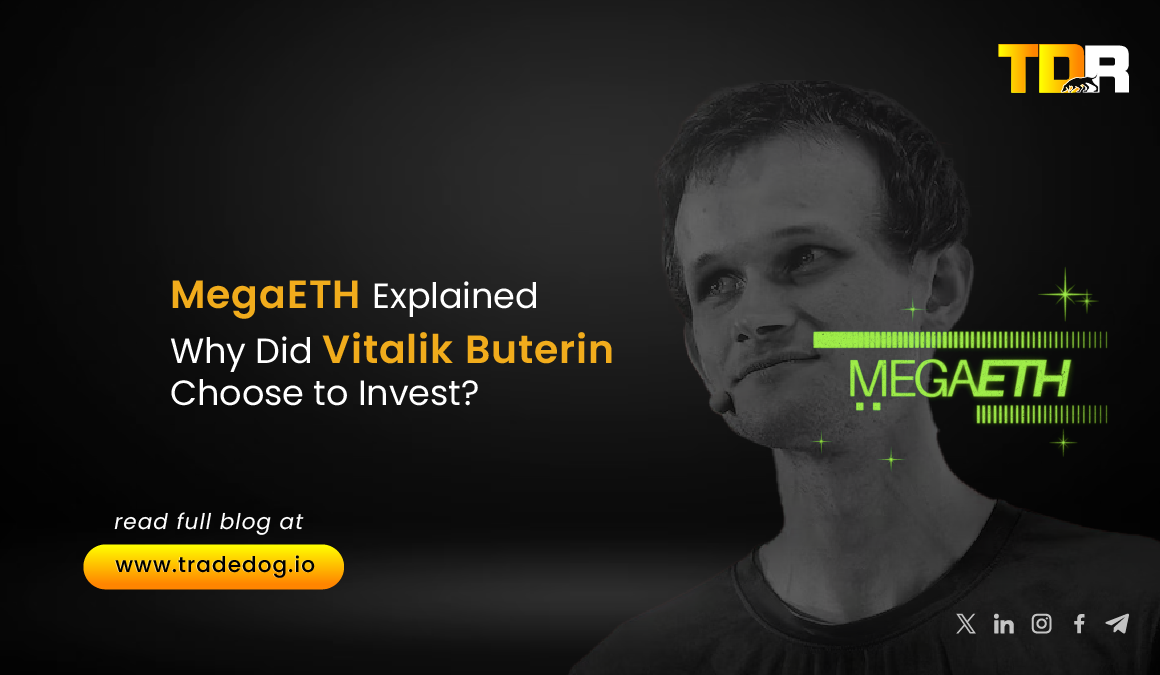Quick Links
MegaETH, a new modular blockchain project, has recently captured the attention of the crypto community. The project raised $20 million in a seed round led by venture capital firm Dragonfly Capital in late June 2024. This funding round was also backed by prominent figures in the crypto industry, including Ethereum (ETH) co-founders Vitalik Buterin and Joseph Lubin.
The Need for a Solution Like MegaETH?
The blockchain industry has long faced challenges related to scalability, speed, and performance. Despite numerous advancements, existing blockchain frameworks still impose significant limitations on decentralized applications (dApps). High gas fees, slow transaction times, and limited computing capacity hinder the adoption and functionality of sophisticated on-chain applications. MegaETH aims to address these issues by introducing a real-time blockchain capable of processing transactions as soon as they arrive, providing updates in real-time, and bringing Web2-level performance to the crypto world.
(Comparison of gas parameters across EVM chains in 2024 – Source: paradigm.xyz)
What is MegaETH?
MegaETH is designed to be the world’s first real-time blockchain, capable of processing transactions instantly and publishing updates in real-time. The project aspires to deliver Web2-level performance to the crypto industry, bridging the gap between traditional cloud computing and blockchain technology. MegaETH targets an impressive transaction throughput, exceeding 100,000 transactions per second, ensuring scalability even under heavy load. It also aims to support demanding applications with its substantial computing power that enables users to create functionalities that wouldn’t be feasible on resource-constraint blockchains. The platform offers exceptionally low latency, making transactions almost instant from a user’s perspective.
Key Features of MegaETH
- Real-Time Performance: MegaETH’s real-time capabilities are its standout feature. The blockchain is designed to handle transactions as they arrive and update the state in real time, providing millisecond-level response times. This performance level is unprecedented in the blockchain space and aligns with traditional Web2 cloud computing standards.
- EVM Compatibility: Being EVM-compatible, MegaETH allows developers to migrate and build Ethereum-based applications effortlessly. This compatibility ensures that developers can leverage existing tools and knowledge, accelerating the adoption of MegaETH.
- Security and Data Availability: MegaETH’s modular architecture uses the security and data availability of base layers like Ethereum L1 and EigenDA. This approach ensures that MegaETH remains secure while focusing on optimizing transaction execution and performance.
How Does MegaETH Work?
(Source – MegaETH)
Unlike conventional blockchains where all nodes perform identical tasks, MegaETH employs a more nuanced strategy where different nodes have different hardware requirements based on their roles called “Node Specialization”. It also allows MegaETH to optimize performance while maintaining decentralization and security. For instance:
- Sequencer Nodes: These high-powered nodes are responsible for the heavy lifting – transaction execution and state updates. They prioritize speed and efficiency to ensure real-time processing. They require high-end hardware to handle execution tasks efficiently, such as AWS r6a.48xlarge ($10/hour).
- Prover Nodes: Acting as the guardians of integrity, prover nodes cryptographically verify blocks generated by sequencers, upholding the security of the network. They have minimal hardware requirements as they only validate blocks, such as AWS t4g.nano ($0.004/hour).
- Full Nodes: These nodes maintain a complete copy of the blockchain ledger and validate blocks based on proofs provided by provers. They have moderate hardware needs for verifying proofs, such as AWS Im4gn.xlarge ($0.4/hour).
| CPU | Memory | Network | Storage | Example VM (Price/h) | |
| Sequencer | 100 cores | 1-4 TB | 10 Gbps | SSD | AWS r6a.48xlarge($10) |
| Prover (OP) | 1 core | 0.5 GB | Slow | None | AWS t4g.nano($0.004) |
| Full node | 4-8 cores | 16 GB | 100 Mbps | SSD | AWS Im4gn.xlarge($0.4) |
This specialization also addresses a key issue in conventional blockchains, the “Straggler problem,” a common scalability issue where slow nodes delay block production. By assigning specific roles to different nodes, MegaETH ensures that slow nodes do not bottleneck the entire network. This heterogeneous blockchain architecture allows network nodes with different hardware configurations to specialize in specific tasks, boosting overall performance.
MegaETH’s Problem-Solving Approach
The development of MegaETH draws inspiration from Ethereum co-founder Vitalik Buterin’s 2021 blog post, “Endgame,” which discussed scaling Ethereum. MegaETH builds on these insights to create a blockchain capable of real-time transaction processing, addressing the scalability issues that have long plagued the industry.
Comprehensive Design Philosophy
MegaETH’s design philosophy is holistic and principled. The team started by conducting deep performance measurements to identify existing system problems. Based on these insights, they designed techniques to address all issues simultaneously. This approach ensured that the blockchain is optimized to reach hardware limits, providing maximum performance benefits to users.
Overcoming Limitations of Existing Blockchains
MegaETH addresses several key issues that have limited blockchain scalability and performance:
- Transaction Execution: MegaETH uses a hyper-optimized EVM execution environment, pushing throughput, latency, and resource efficiency to hardware limits.
- State Synchronization: MegaETH’s state sync process ensures full nodes can keep up with the sequencer, even during peak demand.
- Block Production Frequency: MegaETH produces blocks consistently at high frequency, such as every 10 milliseconds, to support real-time applications.
- Transaction Prioritization: The parallel execution engine supports transaction priorities, allowing critical transactions to be processed without queuing delays.
The Team Behind MegaETH
MegaETH was co-founded by Yilong Li, Lei Yang, and Shuyao Kong, who bring a wealth of expertise and experience to the project:
- Yilong Li: A PhD graduate in computer science from Stanford University.
- Lei Yang: Holds a PhD in computer science from the Massachusetts Institute of Technology.
- Shuyao Kong: An MBA graduate from Harvard Business School with extensive experience at ConsenSys.
Conclusion
MegaETH has the potential to revolutionize blockchain performance, offering significant improvements over existing EVM implementations. MegaETH’s advanced features could provide a major boost to Layer 2 performance, potentially enabling real-world adoption of decentralized applications. However, there are debates about its focus on scaling L2s rather than Ethereum itself. Despite this, the project’s use of existing decentralized networks for security and its innovative node specialization approach promises to deliver unmatched speed and scalability.
As the public testnet is set to launch in early fall 2024, MegaETH’s commitment to solving blockchain scalability and performance issues is poised to make it a game-changer. With strong backing from industry leaders and a holistic design philosophy, MegaETH is well-positioned to set new standards in the blockchain industry, paving the way for real-time, high-performance decentralized applications.









